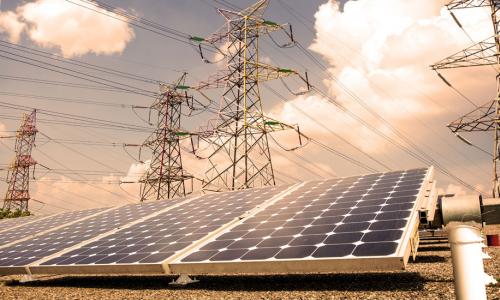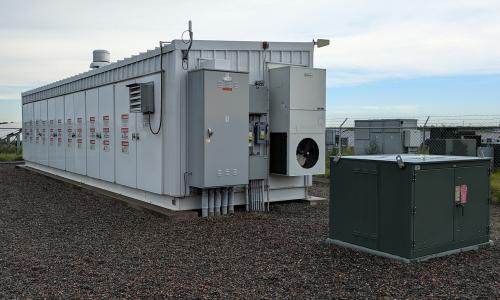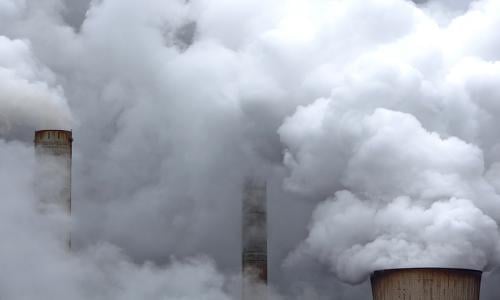Table of Contents
The most widely developed type of geothermal power plant (known as hydrothermal plants) are located near geologic “hot spots” where hot molten rock is close to the earth’s crust and produces hot water. In other regions enhanced geothermal systems (or hot dry rock geothermal), which involve drilling into Earth’s surface to reach deeper geothermal resources, can allow broader access to geothermal energy.
Geothermal plants also differ in terms of the technology they use to convert the resource to electricity (direct steam, flash, or binary) and the type of cooling technology they use (water-cooled and air-cooled). Environmental impacts will differ depending on the conversion and cooling technology used.
Water quality and use
Geothermal power plants can have impacts on both water quality and consumption. Hot water pumped from underground reservoirs often contains high levels of sulfur, salt, and other minerals. Most geothermal facilities have closed-loop water systems, in which extracted water is pumped directly back into the geothermal reservoir after it has been used for heat or electricity production. In such systems, the water is contained within steel well casings cemented to the surrounding rock [1]. There have been no reported cases of water contamination from geothermal sites in the United States [2].
Water is also used by geothermal plants for cooling and re-injection. All U.S. geothermal power facilities use wet-recirculating technology with cooling towers. Depending on the cooling technology used, geothermal plants can require between 1,700 and 4,000 gallons of water per megawatt-hour. However, most geothermal plants can use either geothermal fluid or freshwater for cooling; the use of geothermal fluids rather than freshwater clearly reduces the plants overall water impact [3]. (For more information, see How it Works: Water for Power Plant Cooling.)
Most geothermal plants re-inject water into the reservoir after it has been used to prevent contamination and land subsidence (see Land Use below). In most cases, however, not all water removed from the reservoir is re-injected because some is lost as steam. In order to maintain a constant volume of water in the reservoir, outside water must be used. The amount of water needed depends on the size of the plant and the technology used; however, because reservoir water is “dirty," it is often not necessary to use clean water for this purpose. For example, the Geysers geothermal site in California injects non-potable treated wastewater into its geothermal reservoir [4].
Air emissions
The distinction between open- and closed-loop systems is important with respect to air emissions. In closed-loop systems, gases removed from the well are not exposed to the atmosphere and are injected back into the ground after giving up their heat, so air emissions are minimal. In contrast, open-loop systems emit hydrogen sulfide, carbon dioxide, ammonia, methane, and boron. Hydrogen sulfide, which has a distinctive “rotten egg” smell, is the most common emission [5].
Once in the atmosphere, hydrogen sulfide changes into sulfur dioxide (SO2). This contributes to the formation of small acidic particulates that can be absorbed by the bloodstream and cause heart and lung disease [6]. Sulfur dioxide also causes acid rain, which damages crops, forests, and soils, and acidifies lakes and streams. However, SO2 emissions from geothermal plants are approximately 30 times lower per megawatt-hour than from coal plants, which is the nation’s largest SO2 source.
Some geothermal plants also produce small amounts of mercury emissions, which must be mitigated using mercury filter technology. Scrubbers can reduce air emissions, but they produce a watery sludge composed of the captured materials, including sulfur, vanadium, silica compounds, chlorides, arsenic, mercury, nickel, and other heavy metals. This toxic sludge often must be disposed of at hazardous waste sites [7].
Land use
The amount of land required by a geothermal plant varies depending on the properties of the resource reservoir, the amount of power capacity, the type of energy conversion system, the type of cooling system, the arrangement of wells and piping systems, and the substation and auxiliary building needs [8]. The Geysers, the largest geothermal plant in the world, has a capacity of approximately 1,517 megawatts and the area of the plant is approximately 78 square kilometers, which translates to approximately 13 acres per megawatt. Like the Geysers, many geothermal sites are located in remote and sensitive ecological areas, so project developers must take this into account in their planning processes.
Land subsidence, a phenomenon in which the land surface sinks, is sometimes caused by the removal of water from geothermal reservoirs. Most geothermal facilities address this risk by re-injecting wastewater back into geothermal reservoirs after the water’s heat has been captured.
Hydrothermal plants are sited on geological “hot spots," which tend to have higher levels of earthquake risk. There is evidence that hydrothermal plants can lead to an even greater earthquake frequency [9]. Enhanced geothermal systems (hot dry rock) can also increase the risk of small earthquakes. In this process, water is pumped at high pressures to fracture underground hot rock reservoirs similar to technology used in natural gas hydraulic fracturing. (See How Natural Gas Works for more information.) Earthquake risk associated with enhanced geothermal systems can be minimized by siting plants an appropriate distance away from major fault lines. When a geothermal system is sited near a heavily populated area, constant monitoring and transparent communication with local communities is also necessary [10].
Life-cycle global warming emissions
In open-loop geothermal systems, approximately 10 percent of the air emissions are carbon dioxide, and a smaller amount of emissions are methane, a more potent global warming gas. Estimates of global warming emissions for open-loop systems are approximately 0.1 pounds of carbon dioxide equivalent per kilowatt-hour. In closed-loop systems, these gases are not released into the atmosphere, but there are a still some emissions associated with plant construction and surrounding infrastructure.
Enhanced geothermal systems, which require energy to drill and pump water into hot rock reservoirs, have life-cycle global warming emission of approximately 0.2 pounds of carbon dioxide equivalent per kilowatt-hour [11].
To put this into context, estimates of life-cycle global warming emissions for natural gas generated electricity are between 0.6 and 2 pounds of carbon dioxide equivalent per kilowatt-hour and estimates for coal-generated electricity are 1.4 and 3.6 pounds of carbon dioxide equivalent per kilowatt-hour [12].
References:
[1] Kagel, A. 2008. The State of Geothermal Technology. Part II: Surface Technology. Washington, DC: Geothermal Energy Association.
[2] National Renewable Energy Laboratory (NREL). 2012. Renewable Electricity Futures Study. Hand, M.M.; Baldwin, S.; DeMeo, E.; Reilly, J.M.; Mai, T.; Arent, D.; Porro, G.; Meshek, M.; Sandor, D. eds. 4 vols. NREL/TP-6A20-52409. Golden, CO: National Renewable Energy Laboratory.
[3] Macknick, et al. 2011. A Review of Operational Water Consumption and Withdrawal Factors for Electricity Generating Technologies. Golden, CO: National Renewable Energy Laboratory.
[4] Kagel, A. 2008. The State of Geothermal Technology. Part II: Surface Technology
[5] Kagel, A. 2007. A Guide to Geothermal Energy and the Environment. Washington, DC: Geothermal Energy Association.
[6] National Research Council (NRC). 2010. Hidden costs of energy: Unpriced consequences of energy production and use. Washington, DC: National Academies Press. Online at http://www.nap.edu/catalog.php?record_id=12794.
[7] Kagel, A. 2007. A Guide to Geothermal Energy and the Environment.
[8, 9, 10] National Renewable Energy Laboratory (NREL). 2012. Renewable Electricity Futures Study.
[11, 12] IPCC, 2011: IPCC Special Report on Renewable Energy Sources and Climate Change Mitigation. Prepared by Working Group III of the Intergovernmental Panel on Climate Change [O. Edenhofer, R. Pichs-Madruga, Y. Sokona, K. Seyboth, P. Matschoss, S. Kadner, T. Zwickel, P. Eickemeier, G. Hansen, S. Schlömer, C. von Stechow (eds)]. Cambridge University Press, Cambridge, United Kingdom and New York, NY, USA, 1075 pp. (Chapter 4 & 9).





